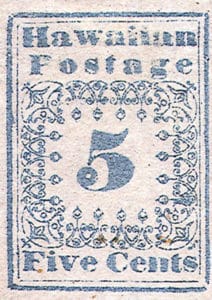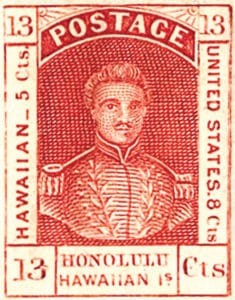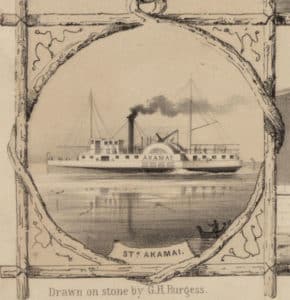A Changing Society
During the time of Kamehameha III’s rule, many changes in Hawaiian society occurred. Missionaries and businessmen may have said that the welfare of the Hawaiian people was their concern. But, although the intentions of some or even many newcomers may have been good, they thought that their way of Western living was superior to Hawaiian ways. They never questioned that Hawaiians might be happier with their own culture and traditions. As a result, Westerners forced Hawaiians to change and adopt new laws, beliefs, and ways of living. For Native Hawaiians, many of these changes were hard. Their own population was decreasing just as many foreigners were coming in to convert them, profit from them, or control them.
The way people traveled to and between the islands was also changing. There were sailing ships and then steamers, but boat travel took a long time. Land travel was even slower. It was still easier to go from place to place along the shores by canoes. Missionaries were the first ones to travel much by land, usually walking on trails. Later, riding horseback was the usual way to travel. When wagons and carriages began to be built, roads had to be made. Many roads started from ancient Hawaiian trails. At first these roadways were short and usually within the towns, but, with growth, the roads spread, too.
Mail service was even slower than travel. A letter might take a year or more on a sailing ship. Ships carried mail to Europe and America. Then, in 1850, a post office was built in Honolulu, and Hawai‘i had its own first postage stamps. Later, Hawaii had its own money, too.
For some, the Hawaiian Islands seemed to be growing too fast. However, the western part of America was growing even faster than Hawai‘i. This was also the time of the occupation of the Oregon Territory (1846), the war with Mexico (1848), and the admission of California as a state (1850). More and more Americans, especially wealthy businessmen from California, were moving into the islands. Many of them would have been glad to see the American flag flying over Hawai‘i. Americans urged Kamehameha III to take steps that would lead to the annexation of Hawai‘i by America.
They gave the king reasons to prove that there would be advantages in doing this. If America did not annex Hawai‘i, some less friendly nation might do it, they argued. Americans said they could give the islands the strong protection Hawaii needed. Robert Wyllie, in charge of foreign affairs, and David Gregg, American commissioner, were American advisers to Kamehameha III. They pointed out that Americans had made the islands much richer because of their businesses there and that Hawai‘i would be even richer if annexed to America.
Kamehameha III agreed with much that was told him, but he also had his own ideas. He insisted that, if there were to be a change, Hawai‘i had to be admitted as a state and not as a territory. He also insisted that, if this move were to be taken, America would have to pay 300,000 dollars a year to him, his officials, and the ali‘i. Before the matter was settled, however, Kamehameha III died. After his death in 1854, it was learned that the American President, Franklin Pierce, would not have signed such a monetary agreement.
The people of Hawai‘i were overwhelmed that their much-loved king was gone. His interest had always been to protect the Hawaiian people. He had given them good laws and worked hard to establish the Hawaiian Kingdom as important worldwide, even through the monumental changes that took place during his reign.




